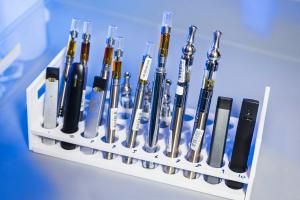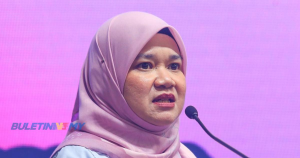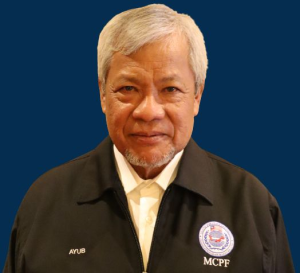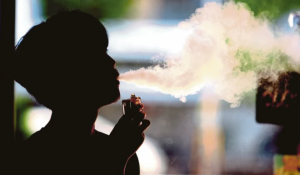A 9-year-old boy, who secretly vaped using a family member’s disposable pod vape for four days in a row, experienced vomiting and dizzy spells before fainting at his home on Aug 21.
The boy had started vaping in secret and was soon hooked.
In a similar incident last year, another 9-year-old boy was rushed to the hospital after he suffered from anaphylaxis reaction (shortness of breath, skin rash and high fever), four hours after vaping.
After being treated, he returned to the hospital six hours later with rashes all over his body, severe vomiting and a 40°C fever.
On Oct 4, a 13-year-old boy had a seizure after he vaped using an unknown brand.
These three cases were among 57 poisoning cases due to vape exposure that were referred to the National Poison Centre (NPC), Universiti Sains Malaysia (USM) here, since 2015, when vape was first made commercially available, until August this year.
There were five cases referred to the NPC in 2015, one in 2016 and two cases each in 2017 and 2018. However, the cases rose to six in 2019, 13 cases in 2020 and 21 cases in 2021.
For the first eight months of this year, seven cases have been referred to the NPC. Of the seven, three involved children below 12 years old.
According to NPC pharmacist Sulastri Samsudin, the NPC had notified a serious case of vape exposure in a 17-year-old asthmatic to the Health Ministry. It was identified as the first e-cigarette or vaping use-associated lung injury (EVALI) case in the country.

Sulastri SamsudinThe former smoker had switched to vaping about three weeks prior to the incident.
He was treated at the intensive care unit (ICU) and given breathing assistance. He showed acute respiratory distress syndrome (ARDS) and severe rhabdomyolysis (a breakdown of skeletal muscle due to direct or indirect muscle injury).
EVALI is a term that has become mainstream after a string of lung injuries were reported among youths using e-cigarettes in the United States in the fall of 2019.
Sulastri said there were more and more poisoning cases due to vape exposure detected nationwide, especially involving young children.
“In a year, one hospital reported between five and eight cases of students and youth being brought in for poisoning due to vape exposure.
“If all hospitals nationwide report such number of cases, can you imagine the intensity?” she said during an interview recently.
In a recent development, the ministry has instructed all medical practitioners to notifiy the ministry of all EVALI and non-EVALI cases.
Sulastri said a large number of vape liquid poisoning cases involved children aged between 1 and 4 years.
“The youngest patient reported to us was a 3-month-old toddler. The majority of toddlers and children ingested the liquid because the devices were placed in easily accessible places.”
Elaborating, Sulastri said the ministry did not recognise vape as a smoking cessation aid as promoted by some vape companies.
“Some tobacco companies are promoting the ‘quit smoking, start vaping’ initiative. By definition, it is correct as some people may stop smoking cigarettes physically.
“But it does not stop the addiction to nicotine. Nicotine is the magnet that leads to addiction of other stronger substances.
“To endorse a medical product to stop smoking, it has to go through thorough and strict processes and testings. For now, vape does not fulfil this requirement. Also, vape is a relatively new product and there is no way to ascertain its safety. This is unacceptable,” she added.
According to Sulastri, vaping and smoking cigarettes are equally harmful in their own ways due to their exposure and formulation, which easily attract young people to give it a go.
“Vaping is certainly not less harmful than smoking cigarettes. For now, we do not accept the industry’s claims that vape is a harm reduction product. We are already seeing the effects (of vaping) now.”
Sulastri said the government’s introduction of the Control of Tobacco Product and Smoking Bill 2022 was a move in the right direction.
“We foresee that vaping and smoking will be a huge problem for our younger generation, and if we stick to the law now (that those 18 years and above are free to smoke), then we are in for bigger trouble in future.
“All of us have to understand the bigger picture. This is why we need to take firm steps to ensure our future generation is free from nicotine addiction and is well protected.
“If we rely on the existing laws, we will never get to curb the nicotine addiction issue once and for all,” she added.
NPC science officer Dr Normaliza Abdul Manaf said based on analysis conducted at NPC’s Toxicology Laboratory, in most cases of vape exposure, the contents of the vape liquid could not be ascertained except for the main items listed on the label such as propylene glycol, glycerol and flavouring.
“We received 11 liquid samples from the ministry following the possibility of EVALI cases. We analysed them for propylene glycol, glycerol, nicotine, vitamin E acetate, heavy metal and chemical profiling.
“Based on our analysis on all the samples, they contained propylene glycol, glycerol and nicotine. Some contained flavour such as vanillin, ethyl vanillin, ethyl malthol and benzyl alcohol. In some samples, we could not determine the flavour although it was stated on the label while others were different from what was stated.”
Normaliza said propylene glycol was FDA approved for use in some products for oral consumption, but not approved for the inhalation exposure.
Nicotine, she said, was a highly addictive compound which affected the brain.
“In addition, nicotine in e-liquid is prohibited in Malaysia.
“Nicotine causes lung cancer. It is also known to increase the risk of adverse cardiovascular events by altering cardiovascular function, both directly and indirectly via nicotine-induced adrenergic stimulation.
“The absorbed nicotine may release catecholamine, subsequently activation in vascular smooth muscle cells contracts the vascular tissue and elevates blood pressure,” she said.
RESOURCE : NST










